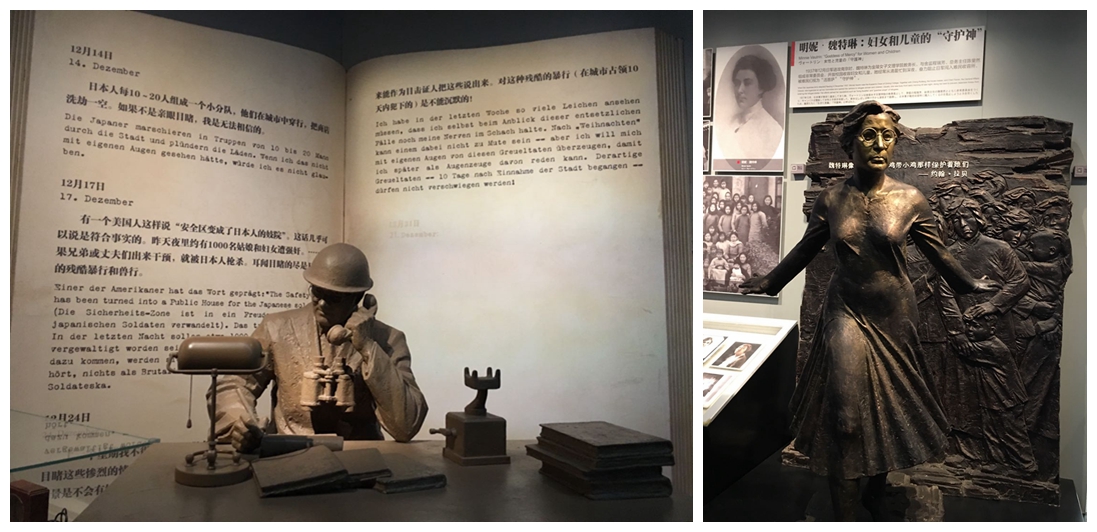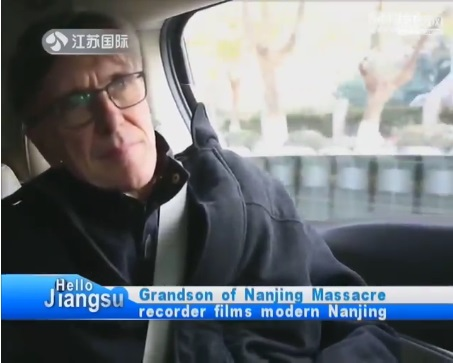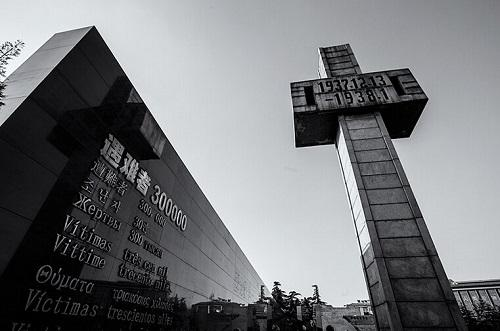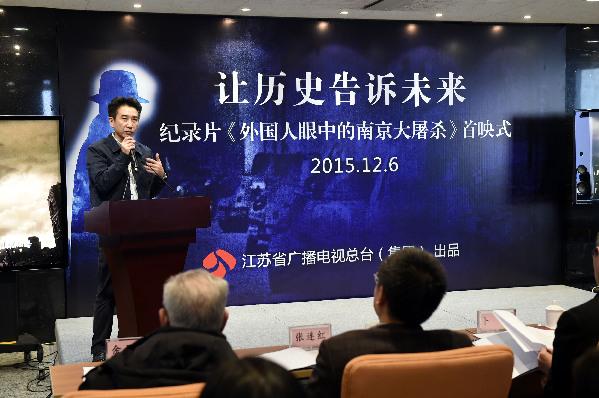Nanjing, a city that has served as the capital of six Chinese dynasties, saw various turmoil, famines, and slaughters in dynasty alternation, but the massacre in 1937 was unprecedented.
My friend and I visited the famous Nanjing Massacre Memorial Hall. My atheistic friend asked me, "If the God you keep talking about existed, where was He in the disaster?"
I didn't know how to answer her. We continued our visit in the hall. We arrived at the introduction section of the Nanking Safety Zone set up by Western businessmen and missionaries to protect local people. Fifteen missionaries risked their lives to save the lives of over 250,000 Nanjing residents with other foreigners. I answered, "God was here."
Since December 13, 1937, Nanjing, one of China's four hottest "furnaces", would face an abyss of suffering in such cold weather: a disaster lasting for more than a month. At that time, the invading Japanese army massacred unarmed civilians and killed more than 300,000.
Immediately she fell into silence and remained contemplative for a long time.
Western Missionaries' Contributions
We saw the statues of John Rabe, a Germany business, and Minnie Vautrin, a U.S. missionary, stand in the hall. After Minnie Vautrin who volunteered to provide refugee camps at Ginling Women's College, died, her friends found that the only belonging besides her pillow was a tear-stained photo of an orphan who sought asylum at Ginling College where she became the acting president twice.

In her last days, Vautrin said to her friends that if she could be born again, she would serve Chinese people because China was her "home". Hailed by Chinese people as "living Buddha", she recorded the daily life during the horror-stricken days in Nanjing in her book Minnie Vautrin Diary that inspired Yan Geling, the author of the novel The Flowers of War.
The novel was adapted to a famous film of the same name directed by Zhang Yimou, one of China's most celebrated directors. The film depicted 13 courageous women who replaced female students to be sexually tortured by the brutal Japanese troop... Hollywood star Christian Bale acted as a western priest who hid a group of women in a church in Nanjing to escape the clutches of the Japanese military.
The fictional film ignited the desire of Chinese people to seek the real story of the American missionary.
Their contributions exposed and recognized
In a while, major Chinese media outlets dug into the real version. The coverage of the magazine National Humanity History subordinate to China's biggest official newspaper The People's Daily, resurrected the historical fact that 24 foreigners stuck to stay in Nanjing in spite of death danger to save 250,000 citizens. It revealed John Magee, one of the 15 missionaries.
According to Culture China, a branch website of China.org.cn, an authorized government portal site, "John Magee was an American missionary. When the Nanjing Massacre occurred, Magee, the chairman of Nanking Committee of the International Red Cross Organization and a member of the Nanking Safety Zone Committee, established a hospital for refugees and injured soldiers and joined the rescue of over 200,000 Chinese people in the face of slaughter."
"What was more, with a 16 mm camera, he shot records of the Japanese army's atrocities. The four sets of the film with the length of a total of 105 minutes has been the only dynamic images retained so far since the Massacre and become the best proof of Japan's crime at the Tokyo War Crimes Tribunal."
The missionary's grandson Chris Magee, a professional photographer, accepted the interview by China's official press agency Xinhua News, on December 13, 2017, the third National Memorial Day for Nanjing Massacre Victims. He documented the peaceful and prosperous Nanjing four scores later.

"Let's remember these remarkable names: George Ashmore Fitch, during the wartime, was the vice secretary general of International Safety Zone Committee and vice director of the Zone in charge of the Zone's real work; he introduced the Japanese army's atrocities in the Nanjing Massacre in Guangzhou and the U.S. and showed relevant documentaries. After WW II, he was a witness in the Tokyo War Crimes Trial of Japanese war criminals."
The name also included Ernest H. Forster, a pastor of Nanjing Saint Paul's Gospel Church of the Episcopal Church of the USA and the secretary of Nanjing International Relief Committee, and Wilson Plumer Mills, an American pastor who held the post of president of the Relief Committee after John Rabe left Nanjing.
At the 70th anniversary of the Nanjing Massacre that fell on December 13, 2007, Nanjing Drum Tower Hospital announced another new proof of the mass slaughter - the diary of Grace Bauer. The medical missionary's diary tells her experience in the hospital from Nov. 25, 1937, to Sept. 15, 1941.
Xinhua News revealed the hospital was one of the earliest western hospitals in China, a "Christian hospital" founded by the Canadian missionary Dr. William Edward Macklin, locally known as "Ma Lin Hospital".
Videos on the disaster went viral on the Internet. A 10-part TV documentary called "Nanjing massacre in the eyes of foreigners" began to broadcast on CCTV "explorations", China's state TV broadcaster, and Jiangsu Television. It was the first work to witness, experience, and explore the massacre from the perspective of foreign people, introducing the contributions of foreign people like John Rabe, Bernhard Arp Sindberg, and Robert Wilson, and three missionaries - Minnie Vautrin, John Magee, and Miner Searle Bates.
Before the second National Memorial Day for Nanjing Massacre Victims in 2016, a three-episode documentary was broadcast in Shanghai. Scenes like American missionaries who appeared in court to testify were first shown in mainland China.
Chinese President Xi Jinping addressed in the first state commemoration of the Nanjing massacre, "Foreign friends took risks to protect Nanjing folks in various ways and recorded the brutality of Japanese invaders. They included John Rabe from German, Miner Searle Bates from Denmark, and John Magee from the United States. The Chinese people will never forget their humanitarian spirit and courageous deeds."
It showed that what missionaries sacrificed for the city was publicly recognized by Communist China.
On December 12, 2016, Li Qiang, the Jiangsu Party secretary, gave the Zijin Grass International Commemorative Medal of Peace to six foreigners: Richard Freeman Brady, John Rabe, George Ashmore Fitch, Robert Wilson, Dr. Clifford Trimmer, and George Rosen.
Since 1807 when the first Protestant missionary Robert Morrison entered China, tens of thousands of missionaries set foot on the land. They not only brought the gospel to Chinese people, but also made significant contributions in education, modernization, medicine and health, music, culture, and translation, etc. China gradually pays attention to their achievements.
The mark monument of a cross erecting in front of Nanjing Massacre Memorial Hall. To many people's surprise, it is a cross rather than a traditional Chinese tombstone.

Asked whether the cross was in relation with religion, Zhu Chengshan, the curator, said yes. "The monument contains a Christian element, designed by the academician Qi Kang from an architectural research institute from Southeast University. But a cultural symbol of the Nanjing Massacre is also integrated into it, for instance, the six-week length of the massacre was engraved on the upper part so that both foreign people and Chinese people could understand it, convenient to spread and circulate."
The standing cross may be a witness to the foreign missionaries.












